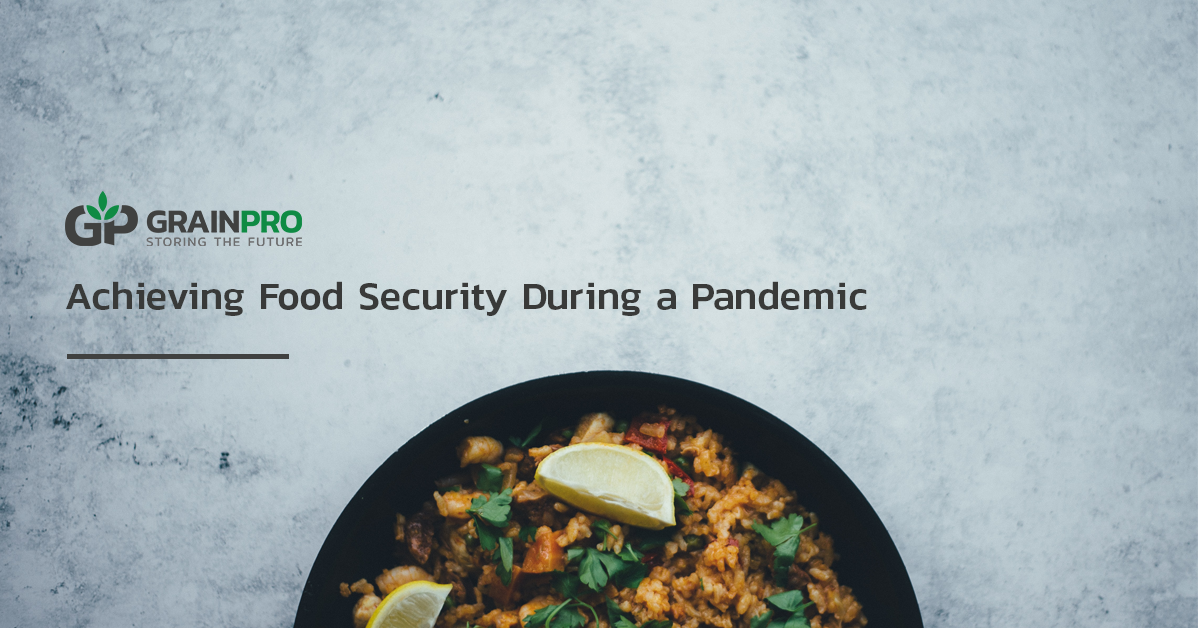COVID-19 has brought life-changing consequences to the millions of people it has affected. Tens of thousands of lives have been lost since its outbreak in December 2019.
This global pandemic has weakened economies and businesses, and the food industry has not been spared. Many countries have opted to go under lockdown, closing ports and airports in a bid to keep the virus out. A number of these countries have imposed month-long lockdowns that can be extended as needed, and some experts believe that COVID-19 lockdowns can last up to 12-18 months.
This becomes a serious obstacle to many import-dependent nations. Moving cargo, even essential items such as food, is a big challenge that needs creative solutions. Both supply and demand are being affected, with marginalized sectors bearing the brunt.
According to the Food and Agriculture Organization, food-import dependent countries can have an average increase in under-nourishment of up to 8% per year. This can severely undermine years of effort to bring food security and health to vulnerable communities.
Food security at a time of a spreading pandemic is critical in keeping communities healthy and functioning. Safe and nutritious food should also be prioritized since it helps boost immune systems.
For countries producing staple crops, having a stockpile to support local populations is a must. Taking these key actions during this pandemic can immensely help populations fed:
Properly planning harvest seasons by scheduling a skeletal workforce to aid farmers can help drive up productivity while keeping the risk of transmission at a minimum. A concentrated and sustainable labor force can greatly fast-track harvesting. Even more, having an organized schedule can save time, resources, and most importantly, lives.
Another aspect that is essential for achieving food security amidst the spread of COVID-19 is through the use of secure storage. Once crops are harvested and dried for later dissemination or consumption, food producers and traders need to ensure that these food stocks will be safe in storage for at least 6 months.
Governments need to manage these large volumes to avoid large-scale volume loss caused by insect infestations and mold growth.
Insects can cause serious damage and can be hard to control once infestations spread. Even more dangerous is mold growth, which can cause serious health risks when ingested.
Perhaps the most critical step to achieving food security during a pandemic is helping food producers. Government bodies should provide key support so even smallholder farmers can safely continue their work.
Assistance such as additional agricultural inputs, low- or zero-interest credit, and farm equipment are the usual support that food producers need. For them to sustainably produce food at a time of a pandemic, they also need protective gear, aid in safely transporting their produce, and logistical support in actually selling their produce.
These three steps are a few of the actions that governments and international organizations can do in order to make sure that nations can have food. Failure to do so can lead to increased hunger, malnutrition, and even unrest amongst those in the marginalized sectors.
Post-harvest solutions such as GrainPro's Cocoons and Bags can help store food for safe consumption even after a year in storage. The hermetic materials of these solutions keep out insects and moisture while inhibiting the growth of molds.
Recognizing that the agricultural industry needs to be supported as well as protected is the right direction to build stronger nations.
Creativity, resilience, and thoughtful use of technology can help mitigate the disastrous effects of COVID-19. Supporting food producers, especially smallholder farmers, is more important now more than ever.a
For more information about GrainPro's post-harvest solutions, click the button below.
Related:
All You Need To Know About Hermetic Storage
Long Term Storage For Grains as Food Security Solution
Reducing Health Risks By Preventing Mold Growth
Date Published: April 8, 2020

